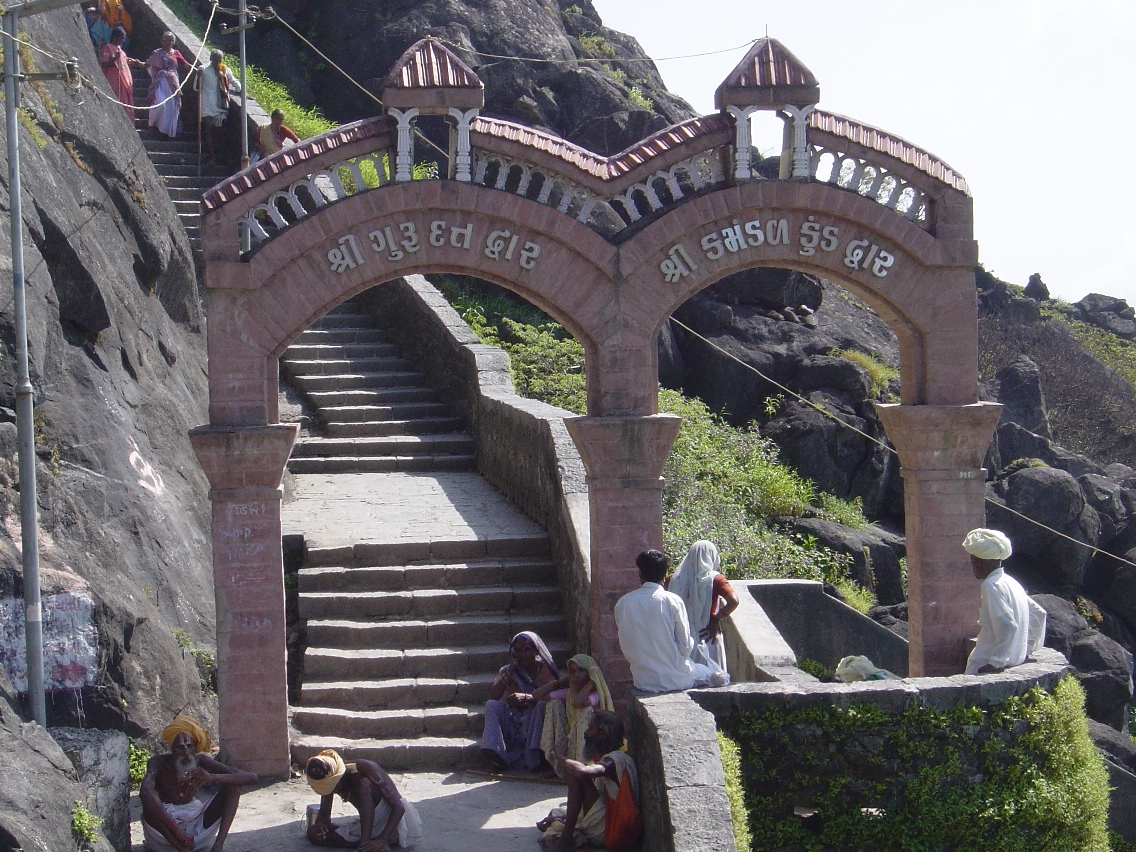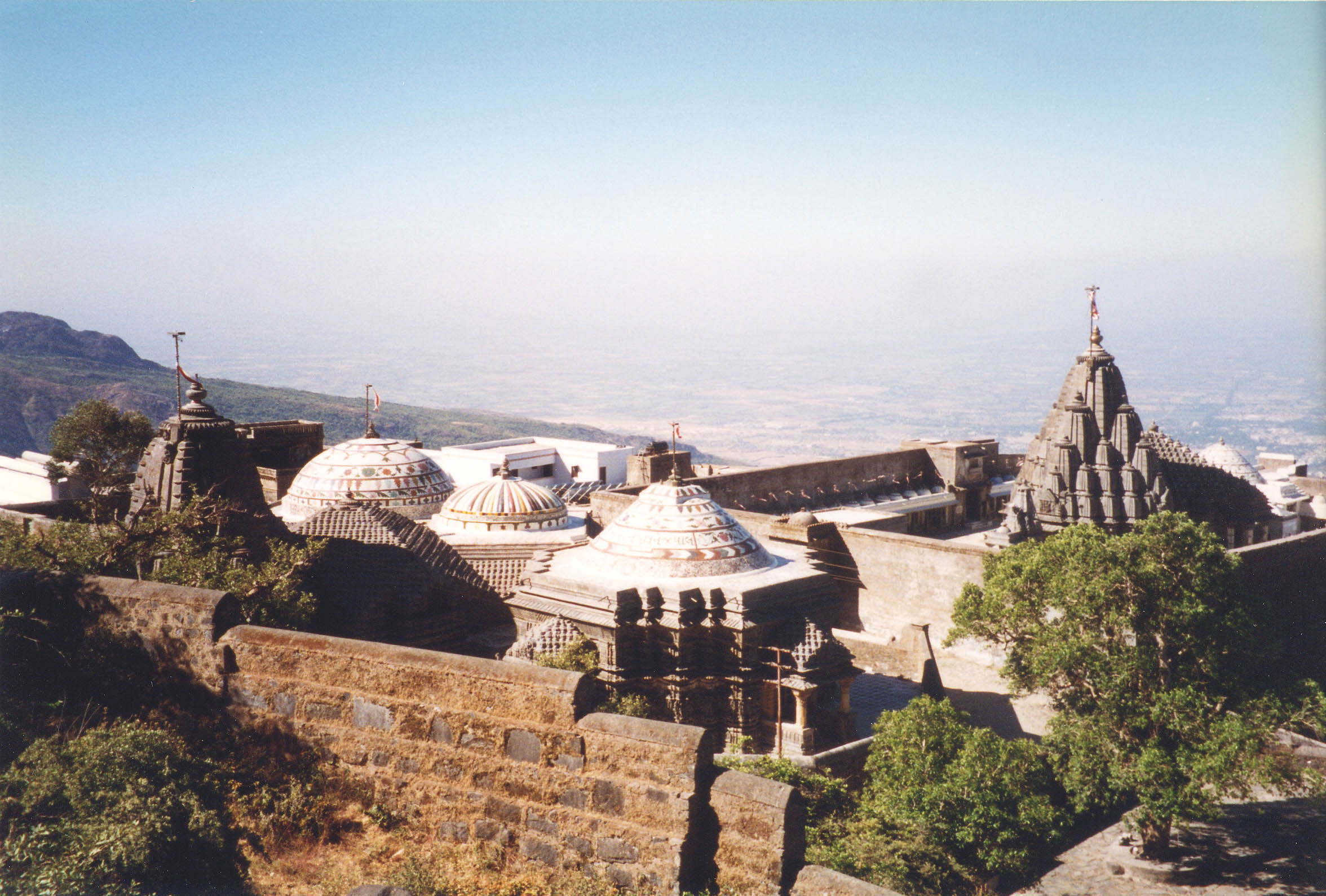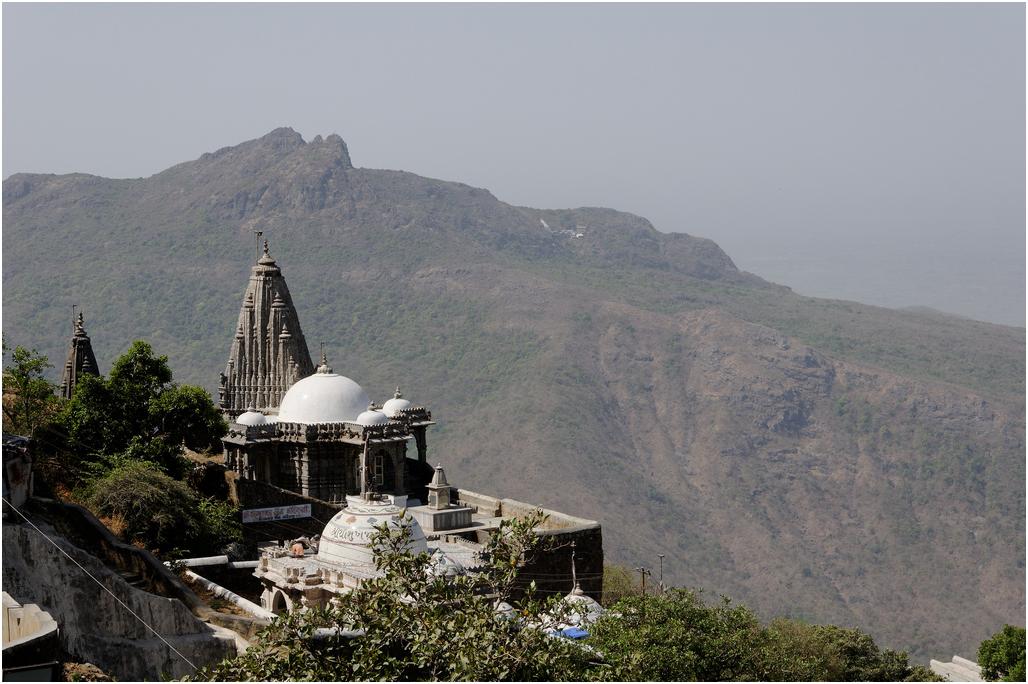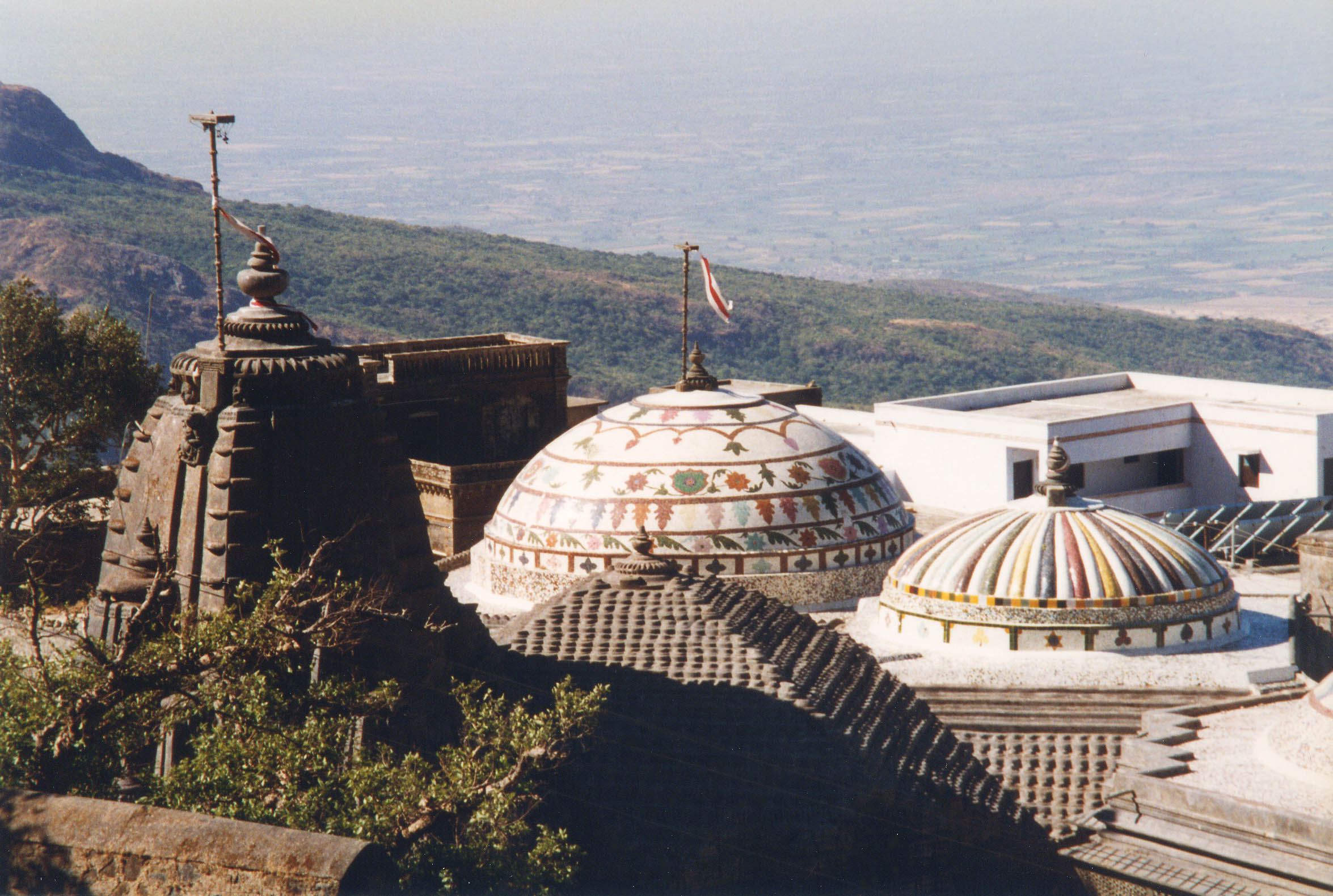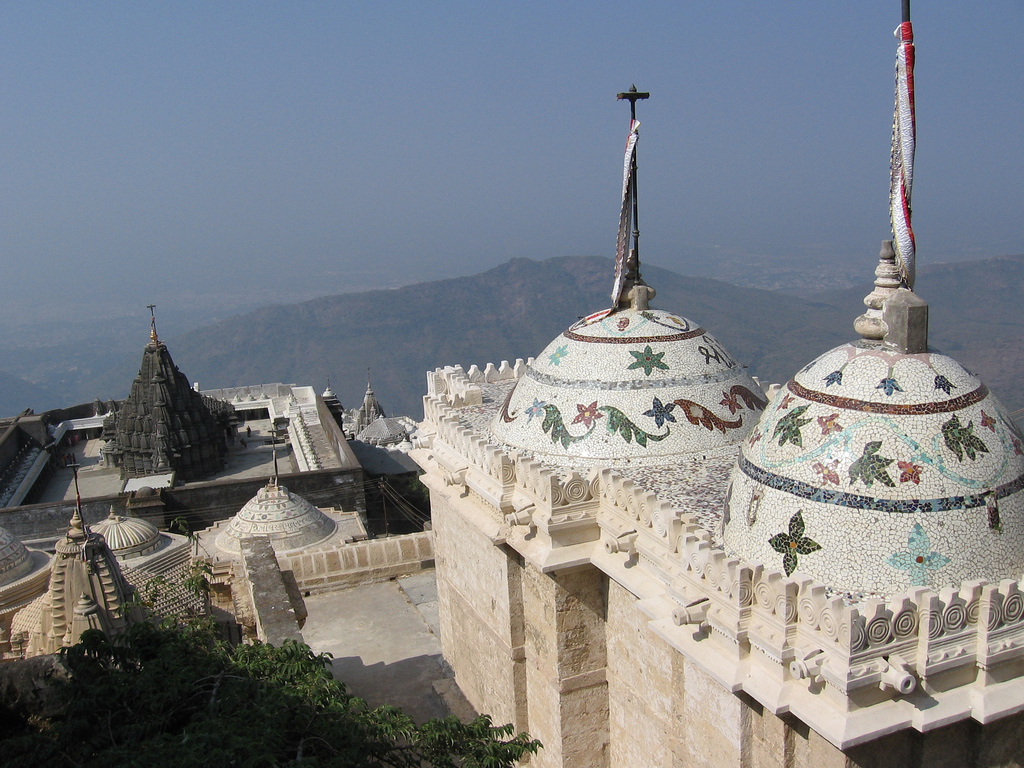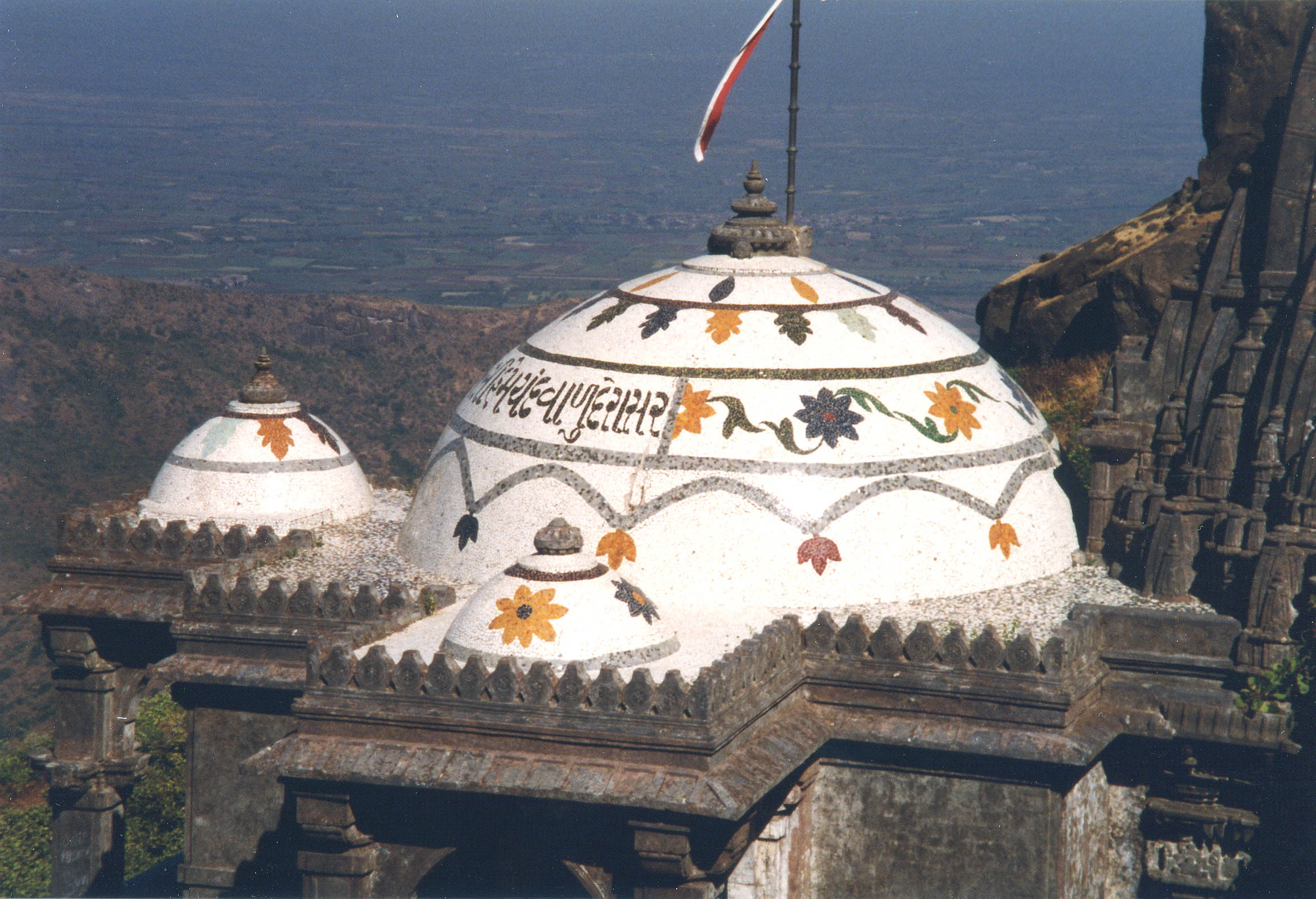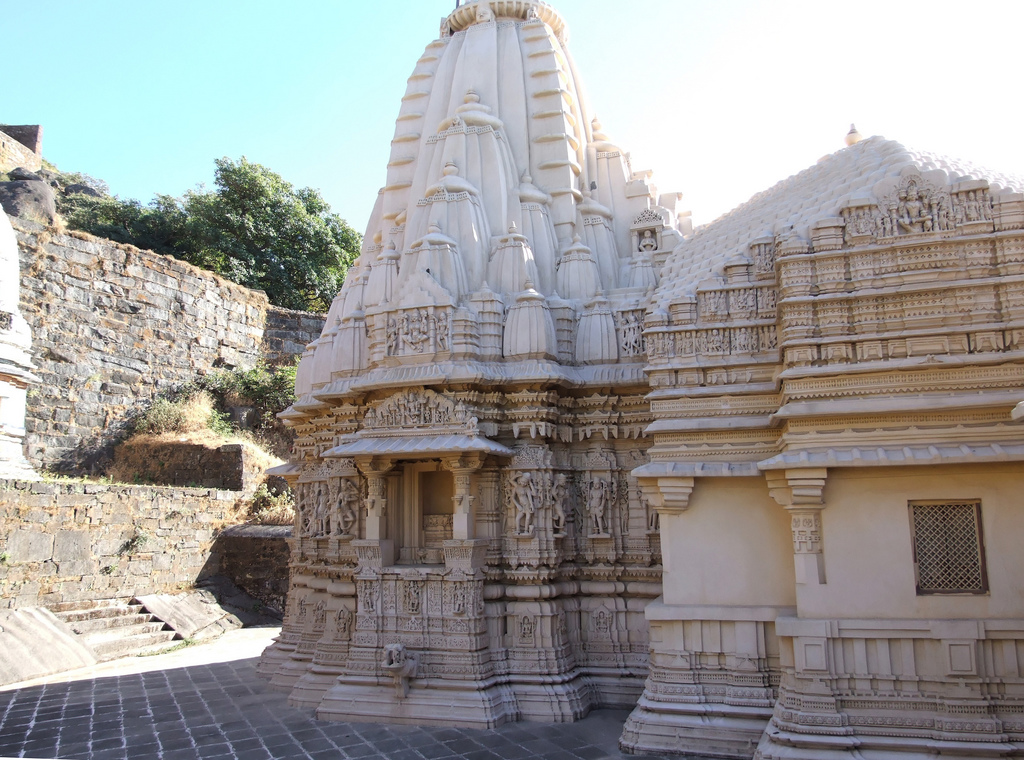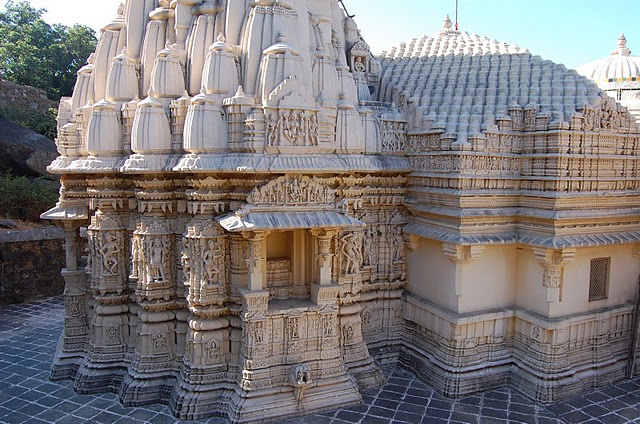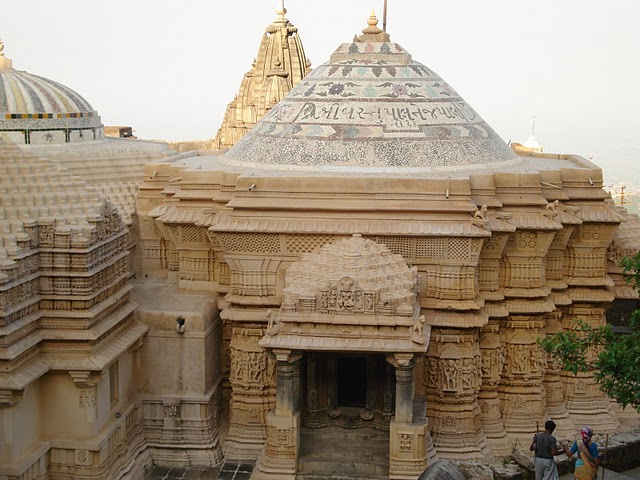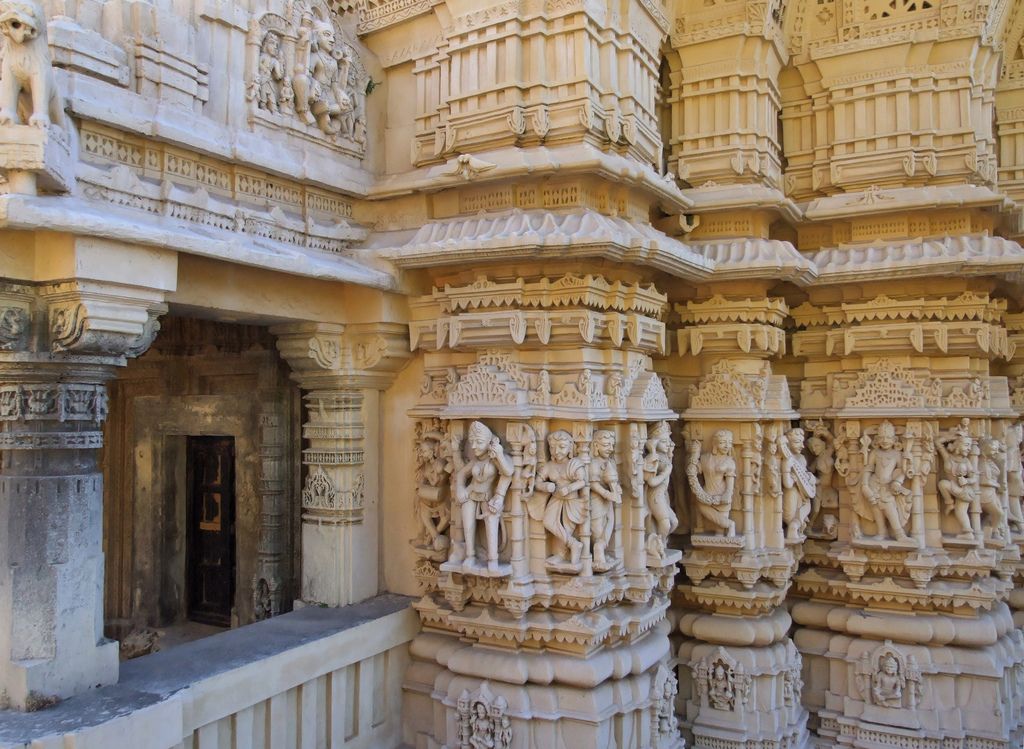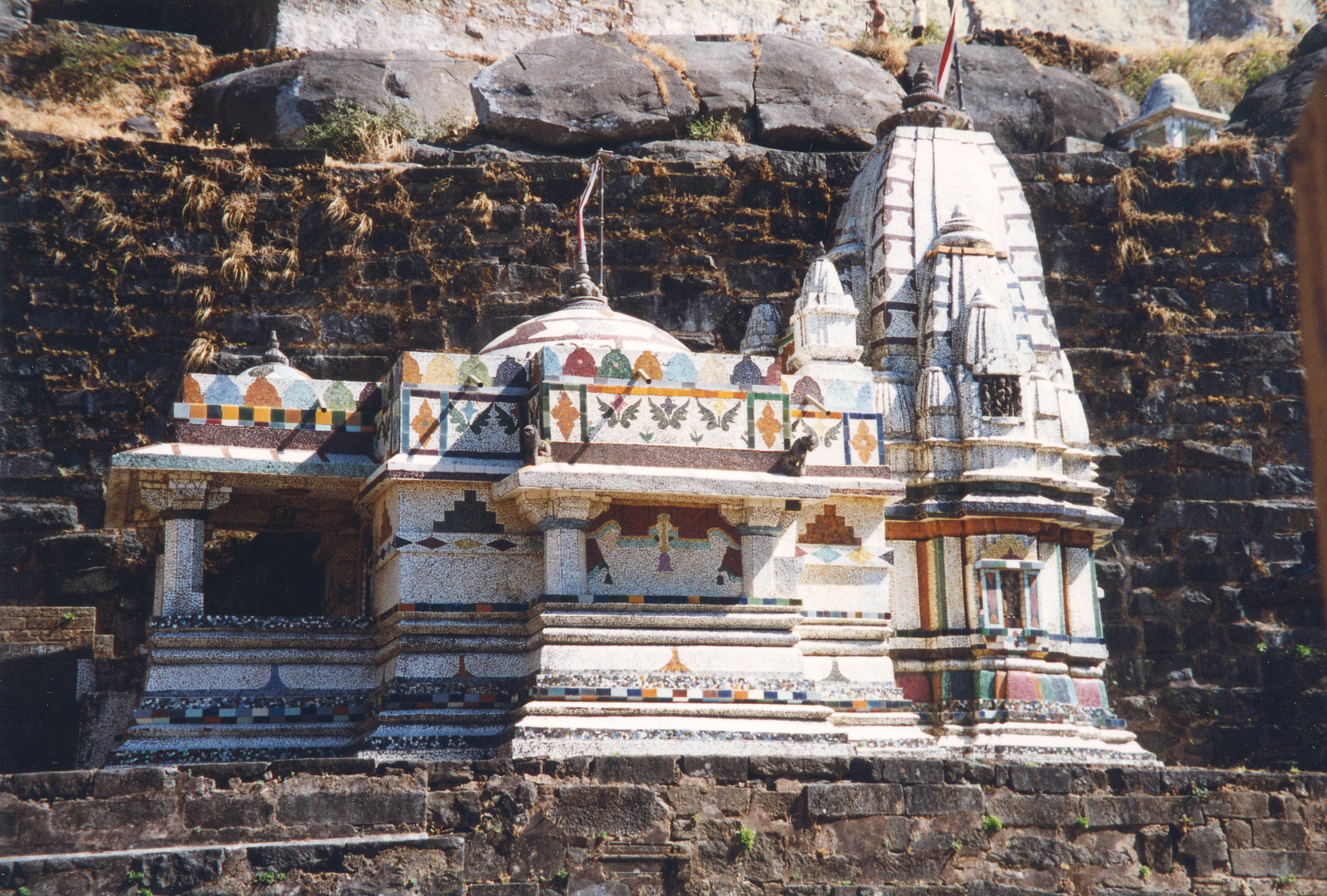
Jain Temples of Girnar
The following article is compiled from different passages of the book Jaina Temples from Western India by Harihar Singh (Varanasi 1980, pp. 36f; 146-148; 151; 191f; 197).
1. The temple site of Girnar
Girnar or Girinar is one of the most sacred hills of the Jainas, lying four miles east of Junagadh, Gujarat. This is the highest hill in Gujarat, rising to a height of about 3470 ft. obove the sea-level. In the Junagadh inscription of Rudradāman Girnar is referred to as Girinagara and it has been suggested that it was from Girinagara that the present name of Girinar or Girnar was derived. In the Purāṇas Girnar is referred to as Ujjayanta, Ujjanta, Udayanta, Durjayanta and Vaijayanta, while in the inscriptions it has been called Urjayat. Hiuen Tsang calls it Yuh-chen-to (Ujjanta),which, according to Cunningham, is the Pali form of the Sanskrit Ujjayanta. Another name applied for Girnar is Raivata or Raivataka. In the Junagadh inscription of Skandagupta dated 457 A. D. Raivataka and Urjayata are mentioned separately. This obviously indicates that Raivataka and Ujjayanta were names of two different hills at Girnar, but later they seem to have been regarded as identical names of Girnar hills.
Girnar has been regarded as a sacred hill by the Hindus, Buddhists and Jainas since ancient times. According to the Giranāra Māhātmya, Prabhāsakṣetra and its vicinity on the south sea-shore of Saurashtra are the holiest of all the places of Hindu sanctity, but Girnar or Vastrāpatha, as it it called, is holier still by some almost infinitesimal amount. Girnar is also included among the five most sacred places of the Jainas. The antiquity of Girnar as a Jaina site may be traced to the time of Neminātha, the 22nd Tīrthaṅkara, as three of his kalyāṇakas, viz. Dīkṣā, Kevalajñāna and Nirvāṇa, are known to have taken place at this place. Kṛṣṇa's sons, Sāmbakumāra and Pradyumna, and the latter's son Aniruddha and seventy two crore seven hundred Jaina Munis are also said to have obtained liberation here. Historically, however, Girnar came to be known from the time of the Mauryan king Candragupta.
Girnar has six distinct peaks separated by deep ravines: the highest of these is dedicated to Gorakhanātha, and the remotest to Kalka. To ascend these peaks there is an arrangement of steps cut in the living rock. After an ascent of nearly 2000 steps and covering a distance of about a mile is reached the point where the shoulder of the mountain terminates in a bare cliff consisting of gigantic masses of black and isolated granite rock. On the summit of the cliff stands on different levels a group of five Jaina temples of which only the Neminātha and the Adinātha (Vastupālavihāra) temples come under the survey of the present description.
2. Neminātha Temple
This is a sāndhāra-prāsāda standing in an oblong courtyard measuring 190 ft. by 130 ft. It consists of a mūlaprāsāda enclosed by an inner pradakṣiṇāpatha, a gūḍhamaṇḍapa with lateral entrance porches, and a rectangular hall terminating at the west end in a balcony window which almost overhangs the nearly perpendicular scarp of the hill. The temple complex is surrounded by a row of seventy one devakulikās with a colonnaded corridor in front. As regards the orientation, the temple faces west. The principal entrance was originally on the east side of the courtyard, but it has now been closed, and the one used is from the Khangar's Mehal on the south side of the court. An opening is also found on the north side of the court. The side entrances on the north and south are co-axially arranged with the gūḍhamaṇḍapa doors.
The temple has considerably suffered from restoration. In the court are some small shrines standing independently or built against the wall of the present temple. These small shrines are very late erections and have marred the beauty of the temple. The floor of the court has been raised up by a layer of stone masonry, so that some of the pīṭha mouldings of the temple and the lower step of the devakulikās are now concealed from view. In spite of the work of vandalism the temple retains its original character.
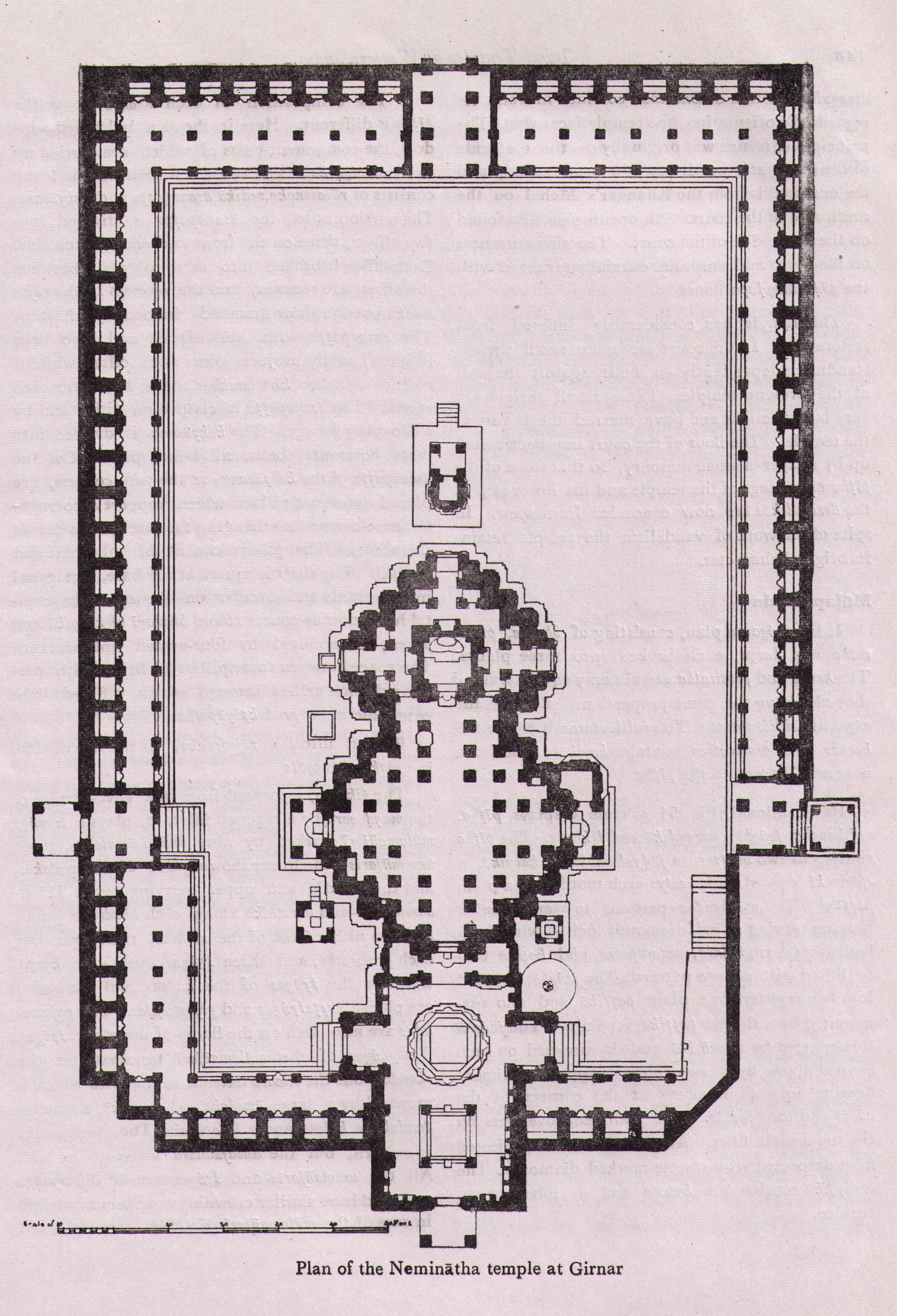
3. Chronology of Neminātha Temple
From the Raivatagirikalpa we learn that the temple of Neminātha at Girnar was built by Sajjana, the Daṇḍanāyaka of Saurashtra under Jayasiṁha Siddharāja, in V.S. 1185 (1128 A.D.). Similar story is also narrated in the Revantagirirāsu. The Prabandhas also credit Sajjana as the builder of this temple. But only the main complex of the temple, viz. mūlaprāsāda and maṇḍapas may be attributed to Sajjana, as we learn from the inscriptions found in this temple that all the devakulikās were added by Ṭhākura Sāvadeva and Jasahaḍa in the memory of Ṭhākura Sālavāhana, on the 8th day of the bright half of Caitra, in V. S. 1215 (1158 A. D.).
The literary evidence is also supported by the architectural and sculptural peculiarities of the temple, which may be enumerated hereasunder:
- All the buttresses of the mūlaprāsāda and the gūḍhamaṇḍapa are broken into planes.
- The karṇa and pratiratha of the mūlaprāsāda are not only equilateral but they also have the same proportion.
- The articulation of the gūḍhamaṇḍapa is made at the frontal pratiratha of the mūlaprāsāda; earlier this coupling has been made at the frontal karṇa.
- Between the aṅgas are koṇikās.
- The kapota of the vedibandha is decorated with udgama pattern.
- The jaṅghā has a mañcikā support.
- The rathikās at the base of the śikhara are flanked by tilakas and ornate balcony models.
- With the appearance of more subsidiary turrets the śikhara proceeds towards its perfection.
- All the ghaṇṭās of the saṁvaraṇā roof of the gūḍhamaṇḍapa are crowned by kalaśa and bījapūraka.
- The brackets of the pillar-capitals in the gūḍhamaṇḍapa are made up of makara-heads with open mouth. This is a feature also found in the Ajitanātha temple at Taranga built during the time of Kumārapāla. The Ajitanātha temple also owes the diagonal arrangement of the plan of its gūḍhamaṇḍapa to this temple. The two temples also show resemblance in the sculptures of the śārdūlas found depicted on the wall of the gūḍhamaṇḍapa of the Ajitanātha temple and in the dome of the gūḍhamaṇḍapa of the Neminātha temple.
- The gajatālus of the ceiling are topped by more than one ornamental band.
These features, some of which first make their appearance in this temple and some show advancement on those seen in the earlier temples, not only furnish us with an evidence to date it later than the Pārśvanātha temple at Kumbharia, but also establish its propinquity to the Neminātha temple at Kumbharia (circa 1136 A. D.). This is clear in the latter temple by the presence of mañcikā below the jaṅghā and by the appearance of a wider buffer wall between the sanctum and the closed hall as the coupling here is made at the frontal pratiratha, and by their absence in the Pārśvanātha temple. The sculptures of the temple also show closest resemblance to those of the Neminātha temple at Kumbharia. This is clearly reflected from the grace and handsome poses of the Apsarā figures appearing in the gūḍhamaṇḍapa dome of the present temple and on the wall of the mūlaprāsāda of the Neminātha temple at Kumbharia. The architecture and sculpture of the two temples no doubt bring closer to each other, but the Neminātha temple at Kumbharia reveals some other features such as circular pendants below the mañcikā, bharaṇī above the jaṅghā, and padmaśilā built on the principle of co-radial regression, which place it earlier than that at Kumbharia. Thus the date 1128 A. D. preserved in the literary sources stands justified to this temple.
4. Vastupālavihāra
It consists of three shrines, each leading out of one of the sides of a square central hall, while the fourth side provides entrance to the temple from the west. Compared to the Neminātha temple described above, this temple has more suffered in the hands of renovators, who out of zeal to restore and beautify it have so inadvertently repaired it that all its architectural and sculptural peculiarities have vanished. Externally, the domes have been coated with broken China wares, while their other parts are whitewashed or coated with white lime. The interior of the temple, particularly the ceilings, is painted in hideous colours, whereas the pillars have been encased with marble slabs or coated with white lime.
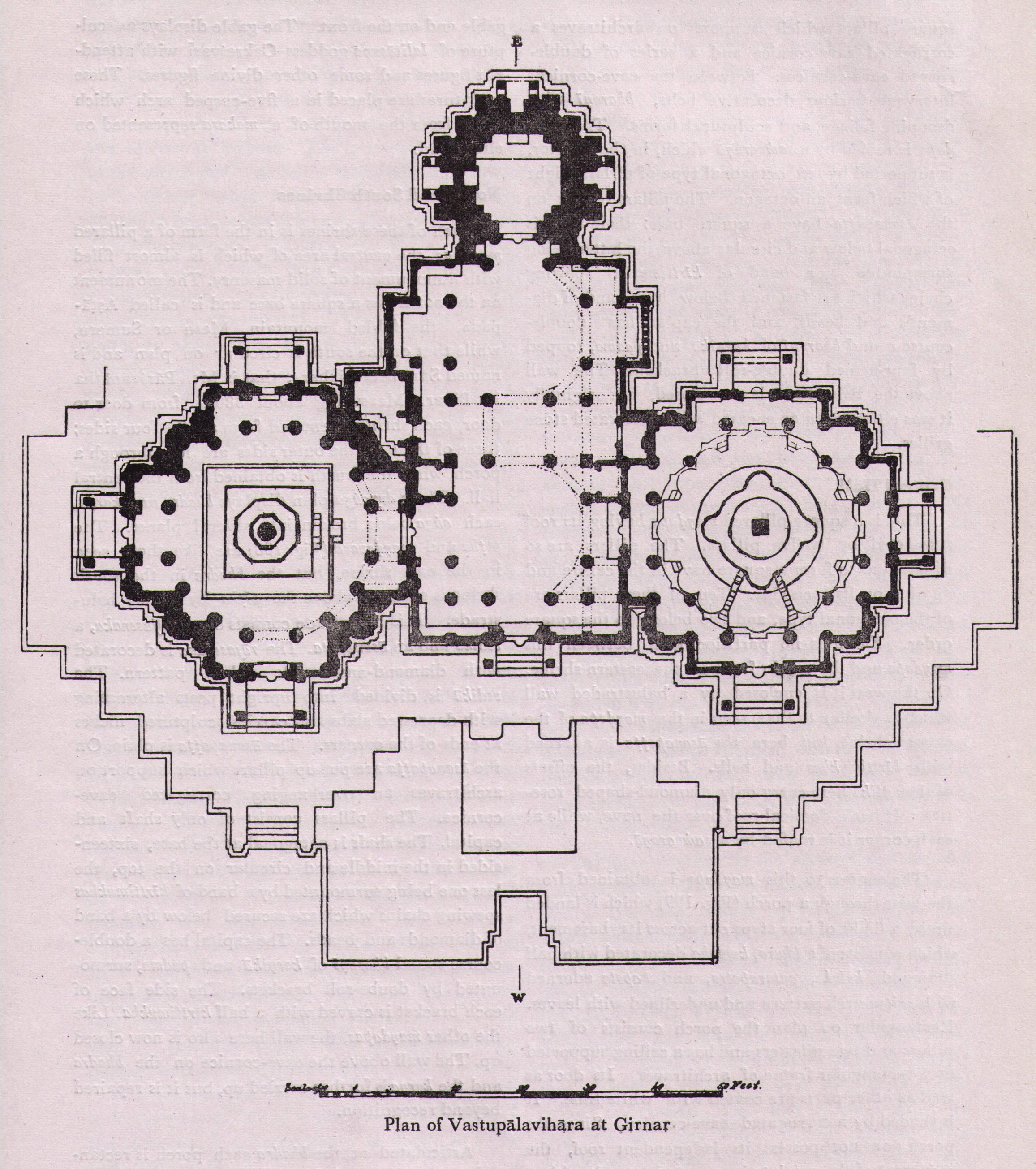
5. Chronology of Vastupālavihāra
The temple is precisely dated on the basis of inscriptions engraved on its doorways. Six in number all of these inscriptions inform that Vastupāla built this temple for the increase of merits of his own and his wives Lalitādevi and Sokhu on Phālgun Sudi 10, V. S. 1288 (1231 A. D.). A stone slab behind the temple bears another inscription which describes the temple thus:
"In V. S. 1288 (A. D. 1231) in the month of Aśvina, dark fortnight, 15th day, Monday, the great minister Vastupāla built, for his own good, a temple of Ādinātha of Śaruñjaya adorned with another temple of the prosperous Kapardi Yakṣa at the back. In front of this, to the north-west, he built, for the good of his dutiful and illustrious wife Lalitā Devi, a temple of Sammetaśikhara adorned with (images of) 20 Jinas. So also to the south (of this) he constructed, for the good of another illustrious wife Sokhu, an Aṣṭāpadaprāsāda adorned with (images of) 24 Jinas."
Although there is difference of few months between the two inscriptions, they are unanimous in that the temple was built in V. S. 1288 by Vastupāla. The literary tradition also credits Vastupāla to have erected this temple.
Ancient impressions of the Jain temples of Girnar
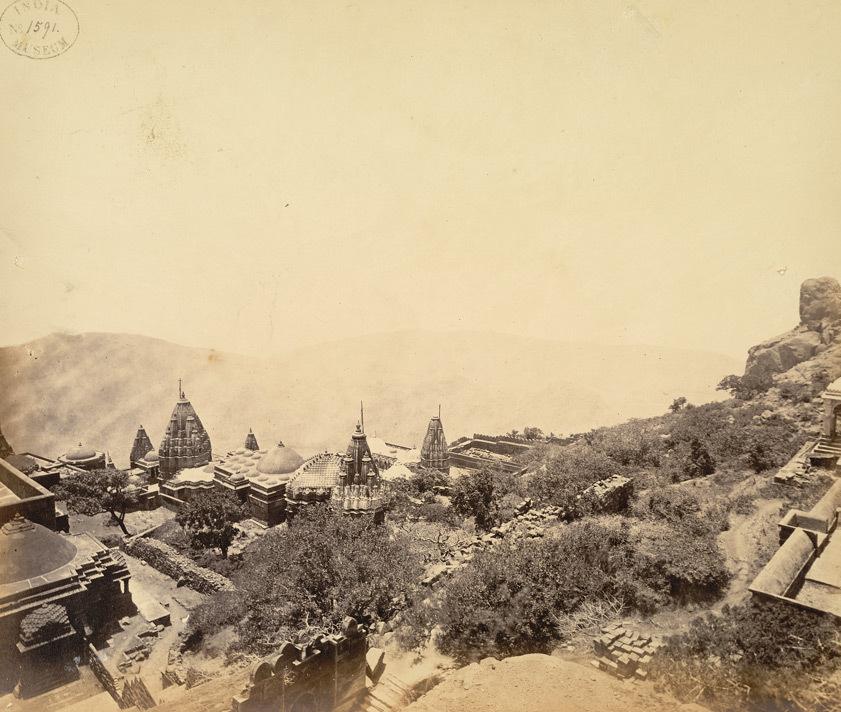
Panoramic view of the Girnar Jain temples, taken by David H. Sykes, 1869 (source: columbia.edu).
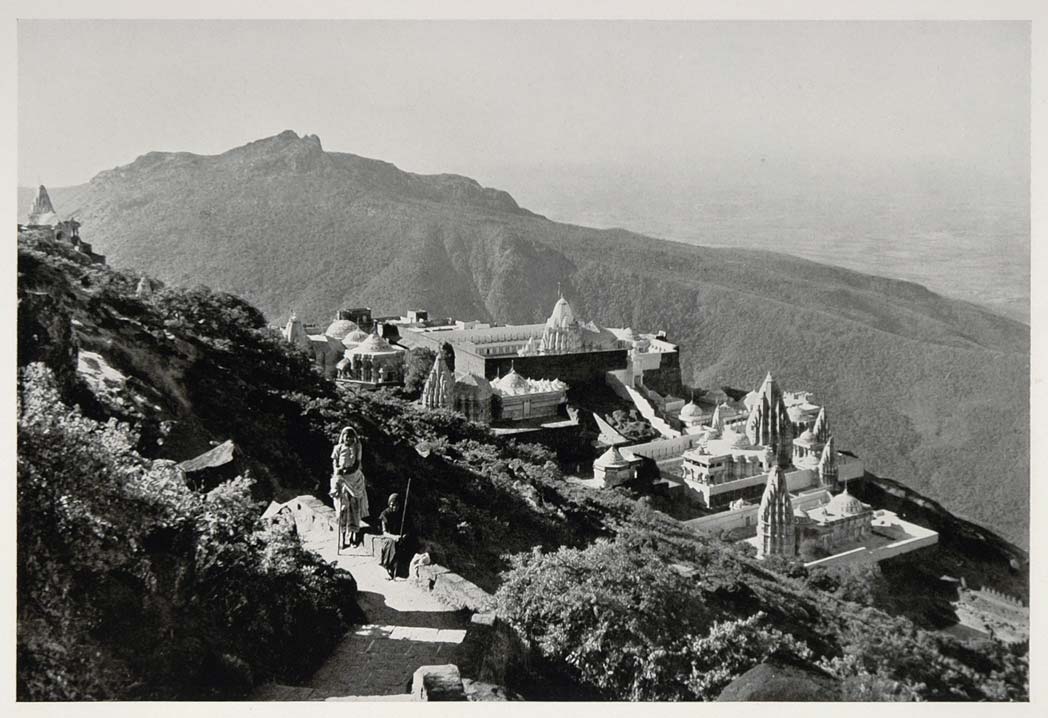
Panoramic view of the Girnar Jain temples, photogravure by Alfred Nawrath, 1938 (source: columbia.edu)
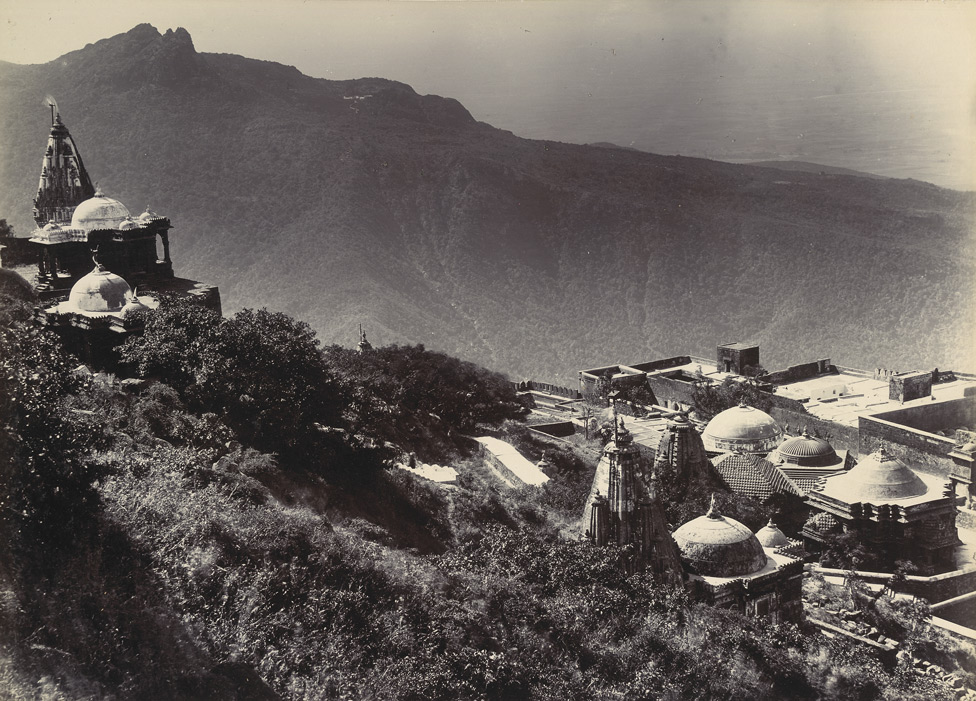
Panoramic view of the Girnar Jain temples, taken in the 1890's by F. Nelson, part of the Lee-Warner Collection 'Photographs of Junagadh' of British Library (source: bl.uk)
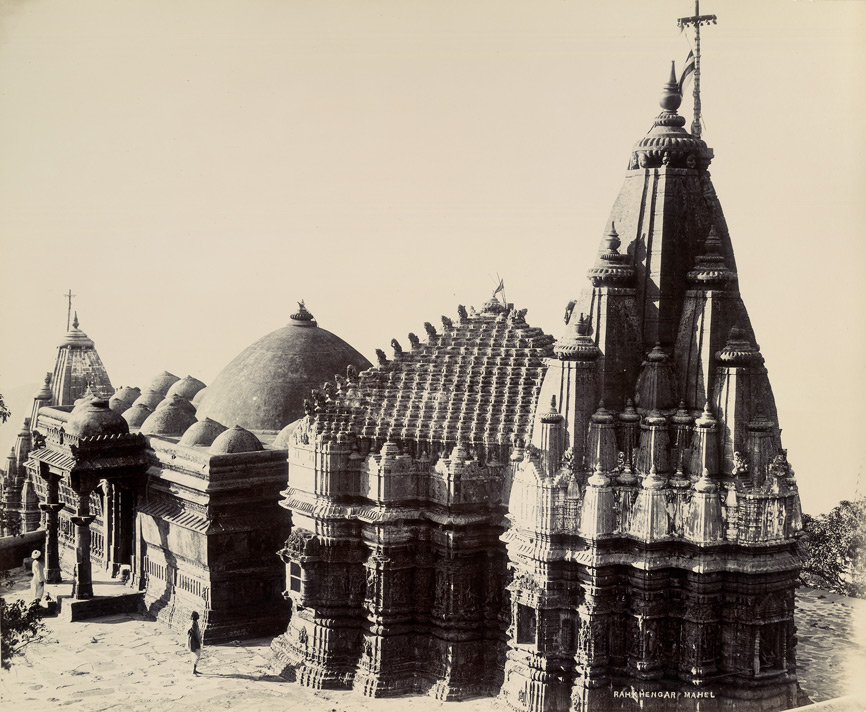
Neminātha Temple, c. 1890 (source: columbia.edu)
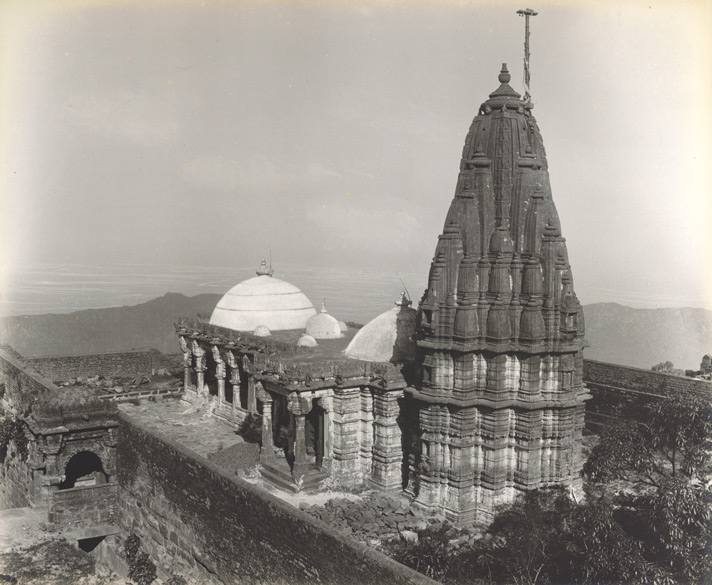
Kumarapala's Temple at Girnar, taken by a photographer of the Solankee Studio around 1900, part of the Curzon Collection of British Library (sorce: bl.uk)
Modern impressions of the Jain temples of Girnar
